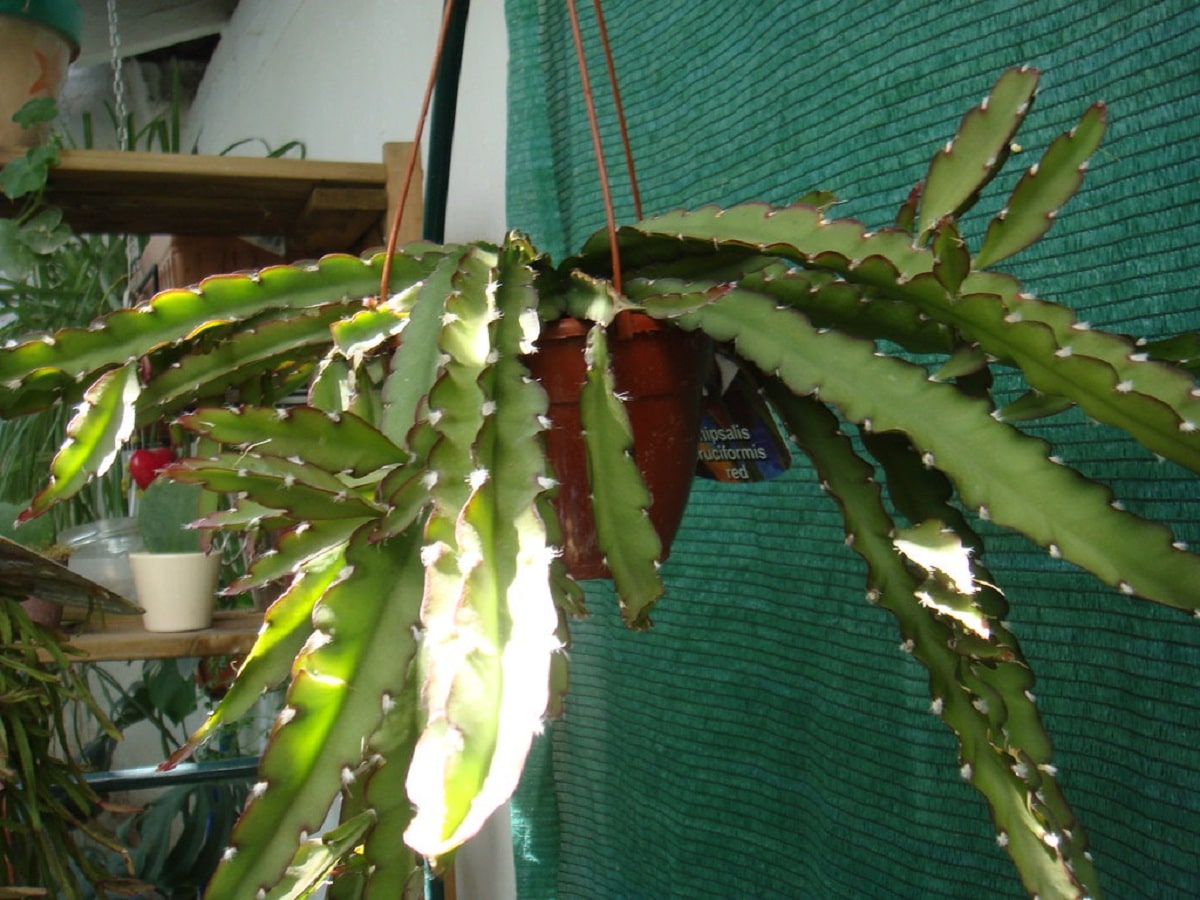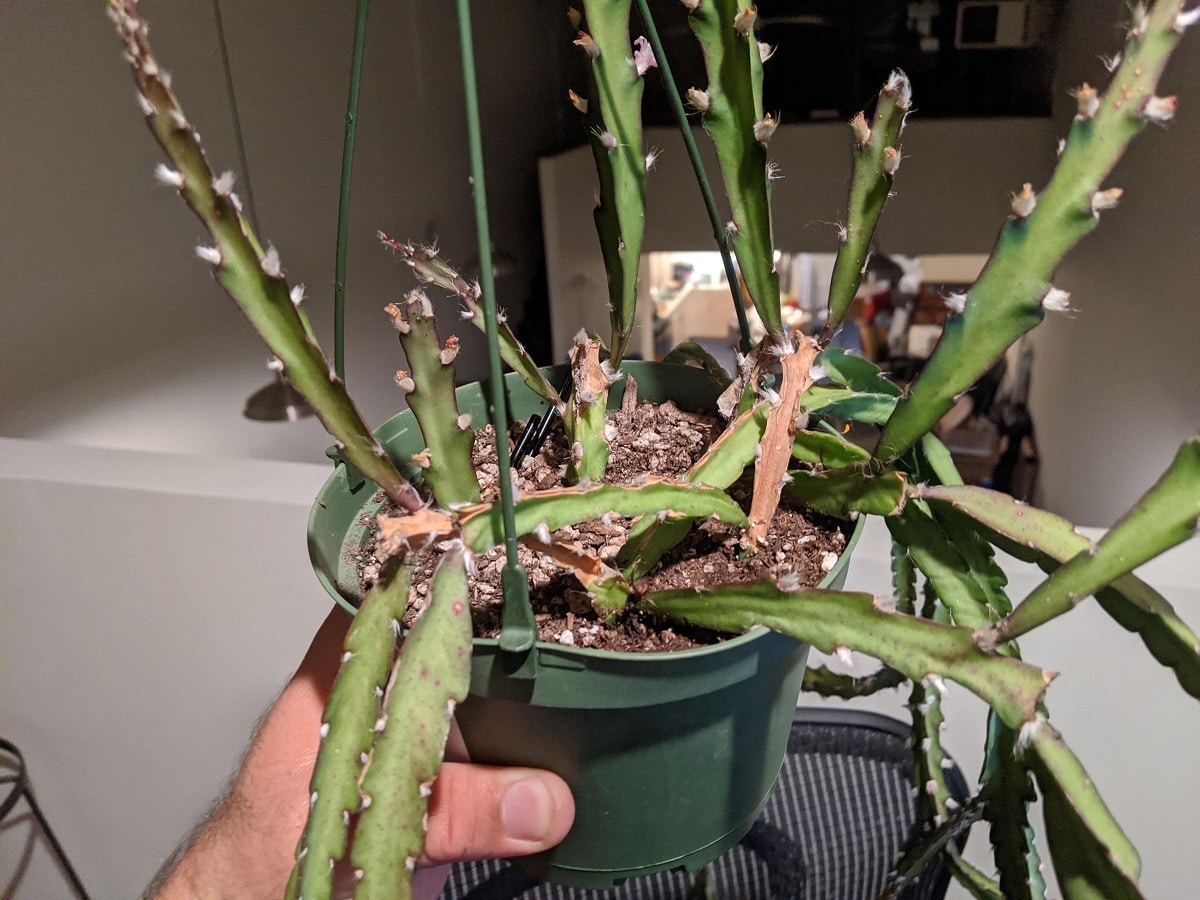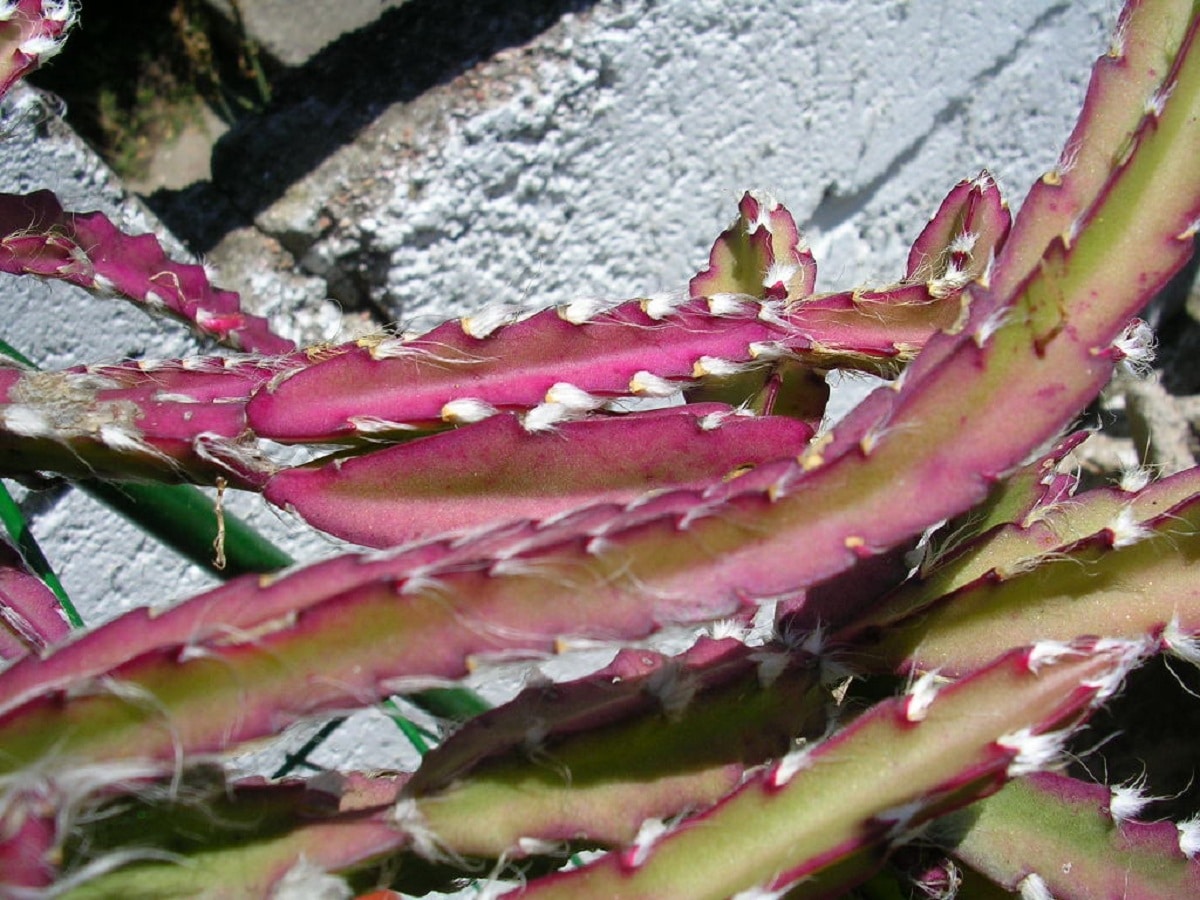
Today we are going to talk about an epiphytic plant that belongs to the Cactaceae family and that does not have the shape of a cactus at all. Is about Rhipsalis cruciformis. These are cacti that have been invading all forest areas in hot and humid climates and have developed far from the most arid or semi-desert environments. All cacti belonging to the genus Rhipsalisse are fully adapted to the more humid and forest environments where succulence has allowed them to compete with other herbaceous plants.
Therefore, in this article we are going to tell you all the characteristics, cultivation and care of the Rhipsalis cruciformis.
Key features

Many of the specimens that belong to this genus can be found hanging in cracks in the bark of trees or on rocky cliffs. Due to its adaptation to the most humid places, it can compete with other herbaceous plants that grow faster and rise on drier, brighter fronds. Keep in mind that the general idea we have about cacti is that they are plants that are capable of storing water and surviving in arid or desert places. In these cases we see that they are plants that resist drought very well and do not tolerate high levels of humidity.
El Rhipsalis cruciformis; however, has a wide distribution area from Brazil to Paraguay, although it is in danger of extinction in the wild. It is widely cultivated throughout the world and is an excellent houseplant. It is used for decoration since it does not have too much care. It does have some more exquisite cares than the common cacti we are used to.
Description of Rhipsalis cruciformis
At first glance we see that they are shaped like a fallen bush and moderately branched. It forms succulent branches that do not have leaves and that have a dark green color, sometimes turning grayish green. We can usually find 3 ribs but sometimes we have more. The branches have lengths that They range from 10-30 centimeters and a thickness of 1 to 2.5 cm. All the thicker ribs are dotted with soft areolas and topped with a tuft of whitish bristles.
This plant, like the conventional cactus we are used to, has its flowering stage. Flowering consists of developing numerous flowers on the areolas. It takes place in late spring and summer when temperatures are higher. These flowers are small in size and actinomorphic. They can have an ornamental appeal. These flowers vary in color from white to dark pink and becomes a magnificent plant during flowering. This is due to the large number of flowers that are spread evenly on the plant.
One of the aspects to take into account to improve flowering is that if they are fertilized, they can produce small round fruits with a purple color. These round fruits leave a small hole when they fall. Another of the decorative aspects of the Rhipsalis cruciformis it is the red tone that the fleshy stems can take on. When they are a little thirsty or cold they turn a bit redder in color to advise that you find us in good condition.
Cultivation of Rhipsalis cruciformis

We are going to see what only requirements and what must be taken into account to cultivate the Rhipsalis cruciformis. We start from the base that it is not a conventional cactus, so we must forget about the common care of these plants. It usually grows in rich, slightly acidic soil. Because it grows naturally in humid places, it can become dry a bit fast if it does not have moderately high relative humidity. To help it grow, you can add a slightly more mineral garden soil that makes the substrate take longer to dry.
Since it comes from a tropical climate, it needs high temperatures but also high humidity. Contrary to what happens with normal cacti that need high temperatures and low humidity, the Rhipsalis cruciformis You need to maintain abundant watering but without retaining the water at the bottom of the pot. The growth stage is the one in which you are cactus needs more water. The indicator for watering again is that the soil is almost completely dry between watering and watering.
The humid environment is appreciated by this plant. We can help you with a rainwater spray once a week. However, if the weather turns a bit drier, this plant is fully prepared to withstand a momentary drought. It cannot survive prolonged droughts but some shorter ones.
As for the location, you need places in full sunlight or semi-shade. Being a plant that requires a greater amount of humidity and is used to tropical wooded ecosystems, it does not tolerate direct sunlight well, especially in the hottest hours. It can grow well indoors behind a window where it gets light. Regarding temperatures, it can be kept well in winter between 10-18 degrees, reducing watering to once or twice a month and watering something more during the spring and summer stage.
Multiplication and maintenance
This plant can live well with root cuts in both spring and summer. After allowing the cuttings to dry, the branches can be placed or buried lightly in sandy soil. This is enough to allow them to develop. It is advisable that the soil is sandy and humid and it can be located in the shade but with somewhat higher temperatures. In order to be successful with the multiplication and maintenance of this plant, it is convenient to try to recreate to the maximum the environmental conditions that exist in its natural ecosystem, being in this case, the tropical climate.
I hope that with this information you can learn more about the Rhipsalis cruciformis, its care and its characteristics.